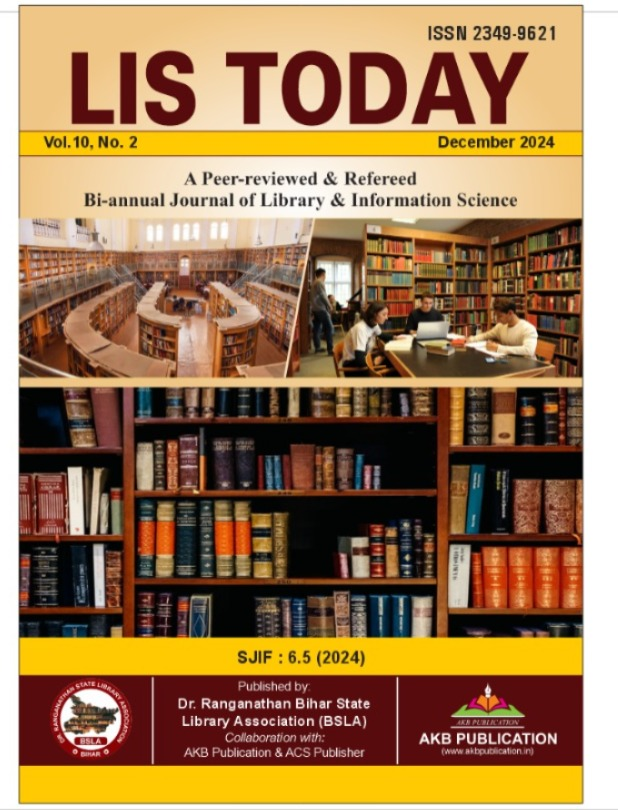Inevitable Trends and Technologies of Libraries and Information Science
DOI:
https://doi.org/10.48165/lstoday.2020.6.12.6Keywords:
ICT, RFID, Cloud Computing, RDA, Library Technologies, Big Data, AI, Expert SystemAbstract
This paper attempts to describe brief outline about latest trends, tools and technologies which are being started used in management and service areas of libraries. The emergence of ICT and its effect and impact via new technologies in libraries can be understood after going through this paper. The paper tries to pick such technologies which are becoming very famous among library and information science professionals due to its positive potential to implement and use it in LIS field. This paper tries to show how computer, mobile, internet and related technologies have capacity to go deep inside of library and information sector and having excellent power to manage libraries, library resources and can serve its users.
References
[1]. Mate, Kasturi S. (2016). Use of Cloud Computing in Library Services. International Journal of Engineering Science and Computing, 6(5 4693- 4697
[2]. Bhardwaj, Pankaj K (n.d), Cloud Computing and Libraries, Journal of Advancements in Library Sciences, 5(2),
[3]. Dutt, Mahipal (2015) Cloud Computing And Its Application In Libraries, International Journal of Librarianship and Administration, 6(1), 19-31
[4]. Pandey, Prabhat & Mahajan, K.D. (2021). Application of RFID Technology in Libraries and Role of Librarian Retrieved 15 January 2021, from http://eprints.rclis.org/15253/3/RFID.pdf [5]. Rahaman, Wasim (2016) enhancing library services using barcode, qr code and rfid technology: a case study in central library national institute of technology, rourkela, International Journal of Digital Library Services, 6(3) 39-50,
[6]. Parabhoi, Lambodara., Bhattacharjya, Nivedita., & Dhar, Rupashree ( 2017), Application Of Modern Tools & Technology in Library Services, Surendra Kumar Pal, and, Bal Ram (Ed), Use of QR Code in Library (pp. 237-243). New Delhi, India: Studera Press.
[7]. Resource Description and Access (RDA). (2020). Retrieved 15 January 2021, from https://www.librarianshipstudies.com/2017/07/resource-description-and-access-rda.html [8]. Asemi, A., Ko, A. and Nowkarizi, M. (2020), Intelligent libraries: a review on expert systems, artificial intelligence, and robot, Library Hi Tech, Retrieved 15 January 2021, from https://www.emerald.com/insight/content/doi/10.1108/LHT-02-2020-0038/full/pdf
[9]. Noh, Younghee. (2015) Imagining Library 4.0: Creating a Model for Future Libraries, The Journal of Academic Librarianship, 41 (2015), 786-797. Retrieved 15 January 2021, from
https://obtienearchivo.bcn.cl/obtienearchivo?id=documentos/10221.1/69341/1/ImaginingLibrary4.0.pdf [10]. Miranda, Giovanna F., Gualtieri, Francesca., & Coccia, Paolo. (2010). How the New Web Generations are Changing Library and Information Services, Medical Reference Services Quarterly, 29, 132–145, 2010. Retrieved 15 January 2021, from https://www.tandfonline.com/doi/pdf/10.1080/02763861003723200 [11]. Sonawane, Avinash S. (2018) Big Data: Application in Libraries, International Journal of Scientific Research in Multidisciplinary Studies, 4(1), 22-23. Retrieved 15 January 2021, from https://isroset.org/pub_paper/IJSRMS/6-LI-01.pdf





